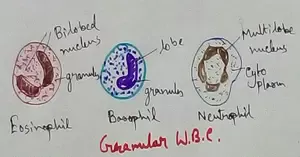Identification of a Stem
We will learn about the identification of a stem and how to differentiate a stem from root.
We have already learned that plants have two distinct parts; one grows underground and the other above ground. The underground part is the root and the other portion of a flowering plant is the shoot, which remains above ground. The shoot system of a flowering plant is composed of stem, leaves, buds, flowers and fruits.
Definition of a stem: The portion of the vascular plant, which grows towards light and holds the leaves, flowers and fruits is known as stem.
The central axis of the shoot system is called the stem. It is a rod shaped structure. At regular intervals it has slightly swollen regions, called nodes, which gives rise to leaves. Each portion in between two nodes is called internode. At the junction of a leaf and a node, a tiny outgrowth is present; it is called axillary bud. At the tip of the main stem a bud is found, which is called the apical bud.
Axillary buds grow to form branches. The branches are thinner than the main stem but they also bear similar nodes and internodes.
Some buds modify itself to grow into flowers. Flowers are the reproductive shoots of a plant. Flowers transform into fruits. These fruits bear seeds and when the seeds come on soil they germinate (initial phase in the development of a seed) and grow into baby plants.
From Identification of a Stem to HOME PAGE
Recent Articles
-
Formed Elements of Blood | Erythrocytes | ESR |Leukocytes |Neutrophils
Jan 15, 26 01:25 AM
Formed elements formed elements are constitute about 45 % of blood afeias haematocrit value packed cell volume mostly of red blood corpuscles and are of 3 types- erythrocytes, leukocytes and blood pla… -
What Is Plasma? | Blood Plasma | Proteins | Nutrients | Cholesterol
Nov 07, 25 10:29 AM
Blood is a mobile fluid which is a connective tissue and is derived from the mesoderm like cell any other connective tissue. Colour of blood is reddish and that flows inside the blood vessels by means… -
Disorders of Respiratory System | Tuberculosis | Pleurisy | Emphysema
Oct 28, 25 11:39 PM
Tuberculosis is very common disease and is caused by a type of bacteria called Mycobacterium tuberculosis. This disease causes different trouble in the respiration and infection of several parts of th… -
Regulation of Respiration | Respiratory Centres | Inspiratory Area |
Oct 14, 25 12:13 AM
Respiratory Centre is the area that controls the rate of respiration and it is observed to be located in medulla oblongata and pons. Respiratory Centre has the following will dispersed components like… -
Explain Transport of Gases | External Respiration | Tissue Respiration
Oct 09, 25 11:35 PM
In humans gaseous exchange is completed in the following ways the steps are - External Respiration or Breathing - Breathing in false taking in of Oxygen and giving out of carbon dioxide in the body. M…





New! Comments
Have your say about what you just read! Leave me a comment in the box below.